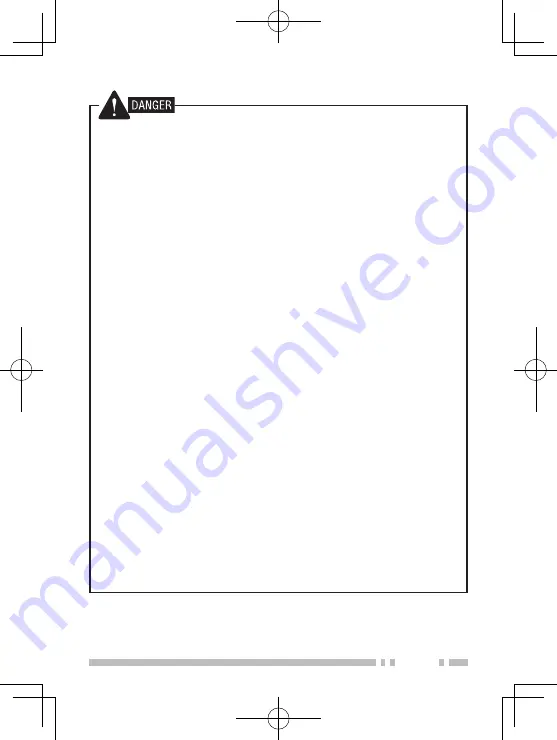
v
•
Do not charge the battery near fire or under direct sunlight!
If the battery’s protecton crcut s damaged, the battery may
charge at extreme current (or voltage) and an abnormal chemcal
reacton may occur. The battery may generate heat or smoke,
rupture, or burst nto flame.
•
Use only the specified charger and observe charging
requirements!
If the battery s charged n unspecfed condtons (under hgh
temperature over the regulated value, excessve hgh voltage or
current over regulated value, or wth a remodeled charger), t may
overcharge or an abnormal chemcal reacton may occur. The
battery may generate heat or smoke, rupture, or burst nto flame.
•
Do not pierce the battery with any object, strike it with an
instrument, or step on it!
Ths may break or deform the battery, causng a short-crcut. The
battery may generate heat or smoke, rupture, or burst nto flame.
•
Do not jar or throw the battery!
An mpact may cause the battery to leak, generate heat or smoke,
rupture, and/or burst nto flame. If the battery’s protecton crcut
s damaged, the battery may charge at an abnormal current (or
voltage), and an abnormal chemcal reacton may occur. The
battery may generate heat or smoke, rupture, or burst nto flame.
•
Do not use the battery pack if it is damaged in any way!
The battery may generate heat or smoke, rupture, or burst nto
flame.
•
Do not solder directly onto the battery!
If the nsulator s melted or the gas release vent or safety functon
s damaged, the battery may generate heat or smoke, rupture, or
burst nto flame.
•
Do not reverse the battery polarity (and terminals)!
When chargng a reversed battery, an abnormal chemcal reacton
may occur. In some cases, an unexpected large amount of
current may flow upon dschargng. The battery may generate
heat or smoke, rupture, or burst nto flame.






































